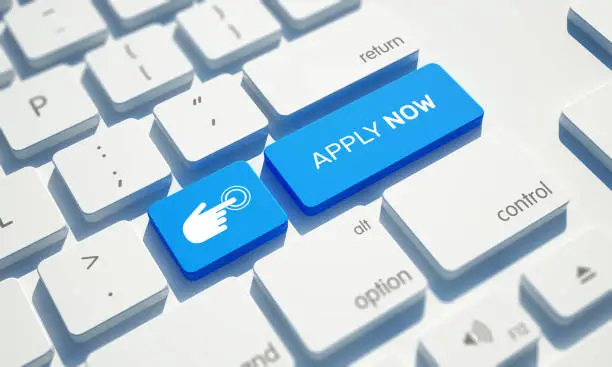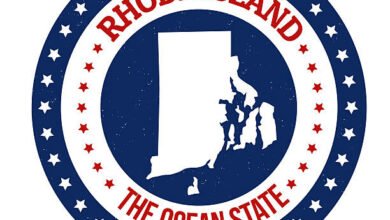Understanding USA Grant Applications in 2024: A Basic Breakdown

Wondering how to access millions in free funding from the US government? USA grant applications unlock resources for research, education, business, and community projects. Learn the types of grants, who’s eligible, and how to craft a winning application. Secure critical funding and bring your vision to life.

What is The USA Funding Grant About?
USA Grant Applications are the gateway to securing free funding from the U.S. government, supporting diverse projects and initiatives that benefit the public. These grants, available to individuals, organizations, and educational institutions, act as seed money for innovative research, financial fuel for community development, lifelines for struggling businesses, scholarships for deserving students, and more.
Various USA Grants are tailored to specific focuses and eligibility criteria. Federal grants, awarded by entities like the National Institutes of Health (NIH) and the National Science Foundation (NSF), stand alongside state and local grants that address issues within specific jurisdictions. Additionally, private foundation grants come from organizations with unique funding priorities.
Eligibility for USA Grants varies depending on the specific program. Still, general guidelines include being a U.S. citizen or permanent resident, having a non-profit organization with 501(c)(3) status, being an accredited educational institution, and meeting specific grant program requirements.
Applying for USA Grants involves a multi-step process. First, identify potential grants that align with your project or needs. Then, read the grant guidelines carefully to understand eligibility criteria, application requirements, and deadlines. Developing a strong proposal that clearly outlines your project, goals, and how grant funds will be utilized is crucial. Finally, submit your application by the specified deadline, ensuring all necessary materials are included.
Success in the grant application process can be achieved by starting early, utilizing available resources such as grant writing workshops and consultants, and maintaining persistence. If the initial application is unsuccessful, refining and resubmitting proposals can enhance the chances of securing funding.
Additional resources to aid the grant application process include Grants.gov, the official U.S. government website for grant information. The Catalog of Federal Domestic Assistance (CFDA) is a searchable database of federal grant programs, and the Foundation Directory Online is a database of private foundation grants.
SEE ALSO: Grants for Manufacturing in the USA to Boost Your Production Potential in 2024
How to Apply for a Federal Funding Opportunity on Grants.gov
The process of applying for a federal funding opportunity on Grants.gov can be an intimidating prospect, especially for first-time applicants. To alleviate concerns and provide direction, we outline the essential steps in the application process, offering a high-level overview to empower applicants and enhance their confidence in navigating this journey.
Step 1: Register on Grants.gov
Firstly, ensure that you have registered an account on Grants.gov. While this registration is a one-time requirement, it is significant for first-time applicants. The registration process is elucidated in detail through a training video, guiding users to navigate this essential step.
Registration Tip: Individual vs. Organization Registration:
When engaging in the registration process on Grants.gov, it’s crucial to discern between individual and organization registration. If you seek grants as an individual, not representing any specific organization, you fall under the category of an “individual applicant.” Conversely, suppose your involvement in grant applications is on behalf of a company, state, local or tribal government, academic institution, or any other organizational entity. In that case, you are considered an “organization applicant.”
After completing your account registration, enhancing your profile further is essential based on your applicant type. For individuals, this involves adding an Individual Profile, while organization applicants should focus on creating an Organization Profile. Understanding and correctly categorizing your applicant type streamlines the subsequent steps in the application process.
Note:
When an organizational user registers on Grants.gov, the organization’s admin user, either the E-Business Point of Contact or a user with the Expanded Authorized Organization Representative [AOR] role, gains the ability to assign new user specific roles. Read on the roles and privileges by clicking here.
Step 2: Determine Your Eligibility and Identify a Funding Opportunity using Grants.gov Search
Understanding your eligibility and pinpointing a suitable funding opportunity is critical in the Grants.gov application process. Eligibility requirements for funding opportunities are delineated by legislation and federal agency policies. Meeting these requirements is indispensable for securing federal funding. A crucial aspect of this step involves clarifying your entity type. Whether you represent a nonprofit organization, a city government, or a university-sponsored research lab significantly influences your eligibility for specific funding opportunities.
Step 3: Apply to the Funding Opportunity by Creating a Workspace
Entering the application phase involves creating a Workspace, a collaborative online environment to streamline the submission process. Within this shared space, your team gains the ability to access and edit various forms concurrently, fostering efficient collaboration during application development. The Workspace is a centralized hub for assembling and refining the documentation for your funding opportunity application.
Step 4: Complete Your Application
After establishing a workspace, the subsequent step is the comprehensive completion of your application. This phase encompasses various tasks, such as incorporating additional team members who are registered Grants.gov users into the workspace. It is imperative to meticulously review the instructions provided by the agency, diligently fill out all mandatory application forms, and thoroughly proofread your application. This stage is pivotal, ensuring that your submission aligns with the specified requirements and is a polished and accurate representation of your proposal.
Step 5: Check Your Application for Errors and Submit Your Completed Application
Before finalizing the application submission, it is essential to scrutinize the completed application for any potential errors. Utilize the Check Application button to review and identify any discrepancies systematically.
Once the application has undergone thorough error-checking, an authorized user is tasked with applying. Upon submission, the grant-making agency retrieves the application from Grants.gov. Subsequently, the agency may contact applicants for further communication or clarification. This step ensures a meticulous review process and facilitates seamless communication between applicants and the granting agency.
How to Determine Eligibility for Federal Funding Opportunities
Determining eligibility is a crucial initial step in the federal grant application process. The eligibility requirements for funding opportunities are distinctly outlined by legislation and federal agency policies, making assessing your eligibility before pursuing a grant imperative.
To enhance your understanding and increase the chances of finding suitable federal funding opportunities, consider the following tips:
1. Know Your Applicant Entity Type:
Identify your entity type. Whether you are a nonprofit organization, a township, or a research lab affiliated with a university, understanding your organizational structure is pivotal for effectively narrowing your search for relevant funding opportunities.
2. Search by Keyword, Then Narrow Your Results:
Utilize the Grants.gov Search function to initiate your quest for funding opportunities. Begin with a keyword search, ensuring specificity. Once you obtain results, refine them on the left side of the screen by selecting criteria such as Funding Instrument Type, Eligibility, or Category. For instance, choosing “City or township governments” under Eligibility narrows the list to open opportunities for these entities. Take note of the number in parentheses, indicating the count of funding opportunities aligning with the selected eligibility type. Don’t forget to save your search to receive notifications for new opportunities that match your criteria in the future.
3. Get into the Details of Each Funding Opportunity:
Having identified a set of funding opportunities that seem to align with your eligibility, the next crucial step is to meticulously examine the official eligibility requirements for each one. This thorough review is essential before committing significant effort to the application, ensuring that the program fits your applicant entity. While the eligibility requirements may be summarized in the Eligibility section of the grant Synopsis, it is advisable to refer to the official funding opportunity announcement (FOA) document issued by the federal grant-making agency for more comprehensive details. On Grants.gov, this document is typically accessible under the Related Documents tab. Additionally, you can utilize the Link to Additional Information field on the Synopsis Tab.
(Note: Some agencies may provide eligibility information in the package instructions.)
4. Reach out to the Agency Point of Contact:
In cases where questions regarding eligibility persist even after reviewing the FOA, it is advisable to contact the federal agency’s designated point of contact. This information can be found in two locations:
Under the Synopsis tab, locate the Grantor Contact Information field within the Additional Information section.
Under the Package tab, click the preview link, and check the pop-up window for the Agency Contact Information listed under the Opportunity Package Details section.
By contacting the agency’s point of contact, you can seek clarification on any lingering doubts about eligibility, ensuring that you have accurate and comprehensive information. Once confirmed and certain of your eligibility, you can proceed with strategic planning and preparing your grant application.
Government Grants: What Are They and How Do I Qualify?
Government grants represent monetary allocations from the U.S. government, bestowed upon eligible individuals who formally apply for assistance. These grants are available at the local, state, and federal levels and can be pursued for diverse purposes, such as debt settlement, business initiation, or funding college tuition. If you need additional funds to enhance your quality of life, applying for a government grant may be prudent.
One noteworthy aspect of government grants is that recipients are not obligated to repay the funds. Unlike loans, grants do not incur debt and involve revenue sharing, direct appropriation, interest rate subsidy, loan guarantees, or technical assistance. Once an applicant receives a grant, the awarded amount becomes the sole possession of the recipient, intended for the specific purpose outlined in the application. The rationale behind government grant allocation lies in the pursuit of economic stimulation, as authorities are willing to allocate funds to individuals if their use of the money is perceived to contribute to economic growth at either a local or national level.
To determine eligibility for a government grant, applicants must submit a formal application, accessible at www.governmentgrants.us. Life circumstances, especially those evoking sympathy or setting individuals apart, significantly influence the likelihood of grant approval. Characteristics such as below-average income, divorced marital status, single parenthood with multiple dependents, a history of cancer survival, or victimization by abuse are examples that may increase the chances of being selected for a government grant. However, eligibility need not be solely based on challenging circumstances; aspirations like becoming the first college graduate in the family, belonging to a minority, being female, or aspiring to launch a business can also elevate the probability of grant approval.

How to Get Help When Using the Grants.gov System
Grants.gov provides various helpful resources for seasoned application users and platform newcomers. Whether you are navigating Grants.gov Workspace or seeking information on federal grant processes, these resources cater to various needs:
Online User Guide:
The comprehensive Online User Guide offers detailed insights into every facet of the applicant management and application submission process. Featuring context-sensitive links within Grants.gov, this guide is a go-to resource when using Grants.gov Workspace, denoted by the blue? icon.
Best for: Understanding the actions available on a specific page or tab in a workspace.
Videos:
Explore the Grants.gov YouTube Channel, housing short training videos such as the “Introduction to Grants.gov” and the “Learning Workspace” series. Each video, lasting 2-5 minutes, focuses on key topics and essential information for Grants.gov users.
Best for Understanding the tasks of creating and managing a workspace.
Learn Grants:
The Learn Grants tab is an educational resource covering federal grant topics for current and potential applicants. It introduces the federal grants lifecycle, policies, eligibility information, fraud prevention tips, and an overview of grant-making agencies.
Best for: Understanding, at a high level, how the grant process works across the federal government.
Forms Repository:
Navigate the Forms Repository to access copies of federal forms used by awarding agencies in Grants.gov. These forms are crucial for creating grant application packages and collecting post-award reporting.
Best for: Familiarizing oneself with the types of forms and information required for federal grant applications.
Grants.gov Chatbot:
The Grants.gov Chatbot is an experimental, automated tool designed to direct users to key resources within the Grants.gov universe.
Best for: Answering applicants’ frequently asked questions (FAQs).
Self-Help Knowledge Base:
The Frequently Asked Questions (Self-Serve Knowledge Base) addresses common queries from applicant users. Users can also create a ticket to receive one-on-one assistance from the Grants.gov Support Team.
Is the USA Funding Grant Legit?
Your concerns about potential scams related to government funding and grants are valid. Indeed, unethical companies exploit individuals by making false promises and charging fees for services that may never materialize. To safeguard yourself from falling victim to such scams, consider the following tips:
1. Be Cautious of Unsolicited Calls or Emails:
Legitimate government grants and funding programs are not typically promoted through unsolicited calls or emails. Exercise caution if you receive unexpected offers, especially with funding guarantees.
2. Avoid Upfront Fees:
Legitimate funding and grant programs typically do not require upfront fees or application costs. Be skeptical of companies that demand payment before providing any services.
3. Check the Company’s Reputation:
Research the company thoroughly before engaging with them. Look for reviews and testimonials from other customers, and check if there are any complaints or negative reports filed against the company. Reliable sources for reviews include consumer protection agencies and the Better Business Bureau.
4. Beware of Unrealistic Promises:
Be cautious of companies that guarantee funding or make unrealistic promises. Government funding and grants are usually awarded through a competitive process, and no company can guarantee success.
5. Verify Credentials and Affiliations:
Check the organization’s or company’s legitimacy by verifying their website, credentials, and licenses. Reputable companies typically have clear and transparent information about their operations. Ensure they are affiliated with reputable organizations in the field.
These precautions will help you make informed decisions and avoid falling prey to fraudulent schemes. Always prioritize thorough research and due diligence when considering any company that claims to assist with government funding or grants. If something seems too good to be true, proceeding cautiously and seeking additional information before proceeding is crucial.
Conclusion on USA Grant Applications
USA Grant Applications are a vital avenue for accessing free funding from the U.S. government, offering support to individuals, organizations, and educational institutions across diverse projects and initiatives. These grants catalyze innovation, community development, business sustainability, academic pursuits, and more.
Understanding the intricacies of the grant application process is crucial for success. The journey involves careful consideration and strategic planning, from registering on Grants.gov and identifying eligibility to navigating the intricacies of individual and organization applications. The array of federal, state, and private foundation grants provides applicants many options tailored to specific needs and objectives.
Key elements in the application process include early preparation, thorough research, and the development of a compelling proposal. The commitment to persistence and seeking assistance through resources like grant writing workshops and consultants can significantly enhance the likelihood of success.
The availability of online resources, such as Grants.gov, the Catalog of Federal Domestic Assistance, and the Foundation Directory Online, offers valuable tools for applicants to explore and identify suitable opportunities. Additionally, the government’s commitment to economic stimulation through grant allocations emphasizes the importance of these funding initiatives in fostering growth at both local and national levels.
In navigating the USA Grant Applications landscape, attention to detail, adherence to eligibility criteria, and effective communication with granting agencies are paramount. The commitment to these principles, combined with the utilization of available resources, empowers individuals and entities to leverage grant opportunities for the betterment of society, the advancement of research, and the promotion of educational and community development initiatives. Ultimately, USA Grant Applications represent a valuable resource for those seeking to bring positive change through funded projects and endeavors.
RELATED
Guide to Grants for International Students in the USA in 2024
A Step-by-Step Guide on How to Apply for USAID Grants
Grants for Trade Schools 2024 – Fuel Your Passion & Build Your Future (Tuition-Free!)




